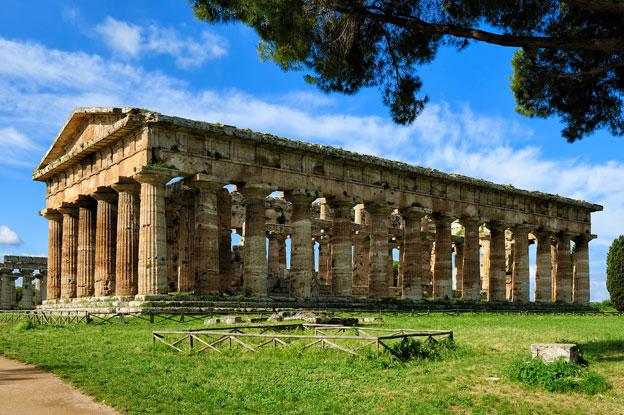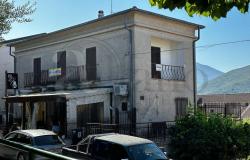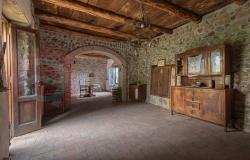Many holidaymakers staying along the Amalfi coast will undertake the 72-minute drive north to visit the ancient sites of Herculaneum and Pompeii. However, should they decide to drive south for 85 minutes, they’ll discover an ancient site that many of Italy’s visitors miss.
Situated on the edges of Piana del Sele, one of Campania’s buffalo plains famed for its mozzarella, is Paestum, a UNESCO World Heritage Site.
Built from the local travertine, this example of Greek architecture was founded in 600 BC by Greeks who arrived from the then important city of Sybaris, in Calabria. Legend dictates that this community that consisted of a forum, marketplace and gymnasium and had its own seat of government, was founded by Jason and the Argonauts; however, few historians are convinced of this.
Despite being some distance from the sea and separated by a fresh-water lagoon, the city was originally called Poseidonia in honour of Poseidon, the sea god. By the end of the 500 BC, the name was changed to Paistos until the Romans took control in 273 BC and renamed it Paestum.
The city began its decline in the 4th century after deforestation for agriculture led to the advance of the surrounding marshland; this, in turn, created an increase of the cases of malaria and the population became more concentrated at the elevated levels, particularly around the temple of Athena.
The last of Paestum’s inhabitants finally left the city in the 9th century, following constant Saracen attacks. Once again, the marshes encroached upon the city and the metropolis became forgotten. It wasn’t until the development of new roads back in 1748 that it was rediscovered and its importance understood.
The oldest of the three temples at Paestum is dedicated to Hera, the wife of Zeus and goddess of fertility. The Poseidon temple is thought to be the finest preserved Doric temple in the world, built around the same time as the Parthenon; it’s hard to believe that it lay forgotten for so many years. The smallest of the three temples was dedicated to Athena, the Goddess of war, before being re-dedicated by the Romans to their goddess of agriculture, Ceres.
The German poet Goethe visited the Paestum temples back in 1787, saying he was ‘strongly impressed by them’ and the 19th century English writer George Eliot said of the ruins, ‘the finest thing we have verily seen in Italy’.
The site is open daily from 09.00 am to an hour prior to sunset, with the adjoining museum open daily from 08.45 am to 07.00 pm. Both attractions require an admission fee, with tickets for both carrying a discounted rate.
The area is within easy reach of the coast with sandy beaches and of course many bars and restaurants. For those wanting to stay longer, in the vicinity there are many (mostly) four-star hotels; however, don’t expect the resort to be too commercial, as it is still pretty much low-key.
Getting There
By bus: Paestum is accessible from Naples, but more frequent service is available from Salerno on the Napoli-Salerno-Paestum-Agropoli-Vallo della Lucania line.
By Train: Paestum is accessible from Naples by train. Make sure it stops at Stazione di Paestum. The site is a 15-minute walk from the train station. From the front of the station, walk through the gate in the old city wall and continue until you see the ruins in front of you.









